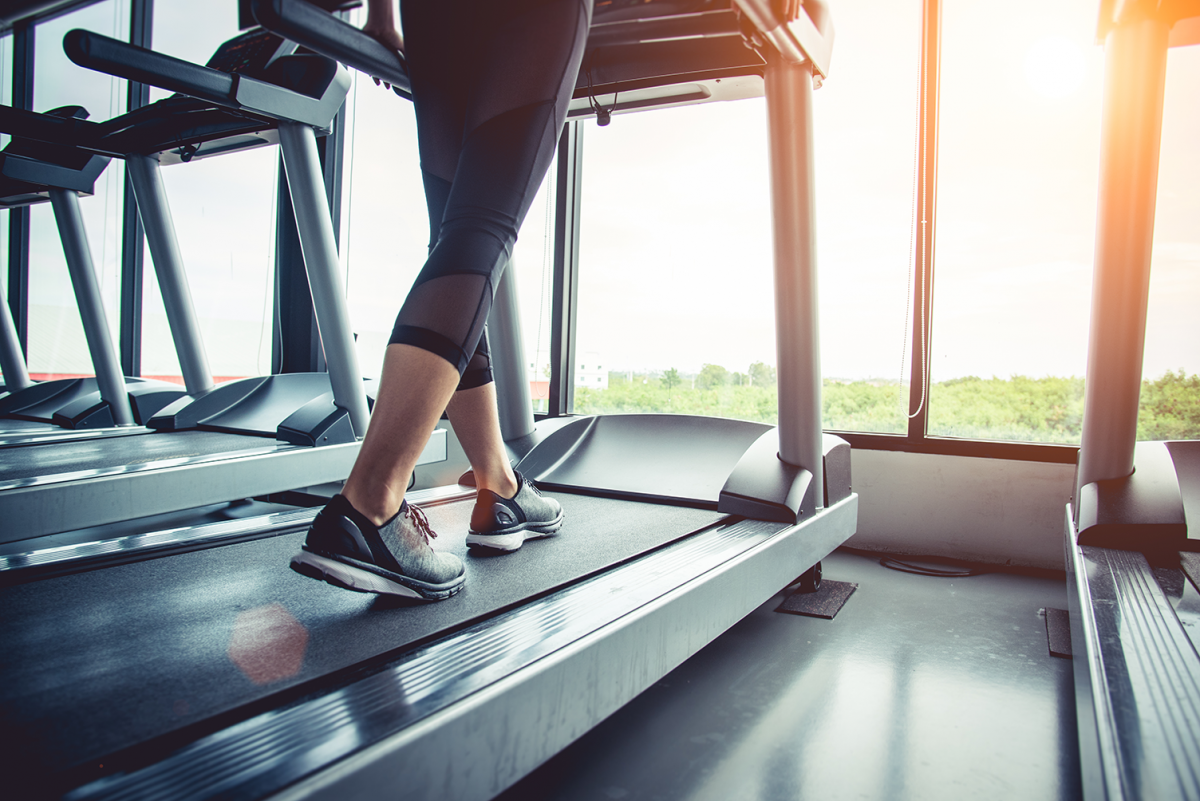Treadmill running is ideal for interval training and to improve your technique. But for it to be effective, it needs a trick. And there are special treadmills for rehabilitation – on which the runners regularly shine with joy.
Training on the treadmill has several advantages:
- Firstly, the performance is very well trackable. Heart rate, distance, pace – the display always provides all important information.
- Second, the treadmill is ideal for interval training, running technique training and performance diagnostics.
- Thirdly, it saves you the trouble of training outdoors in rough weather.
- And fourthly, it can be a great help in cases of overload damage, rehabilitation or overweight – as long as you get on the right treadmill.
Training on a treadmill is basically similar to running outdoors, but it requires less energy. In “normal” running, the body is actively moved forward over the supporting leg. On the treadmill, on the other hand, the supporting leg under the body is “pulled away”. In addition, there is less air resistance and warmer temperatures inside. All this means that treadmill training is less of an effort at a comparable speed – although this is all the more important at a higher speed: at a speed of 8 km/h, for example, runners on the treadmill use around five percent less energy compared to running outdoors, while at 15 km/h 10 percent less energy is required.
This can be compensated by adjusting the treadmill to one percent incline, from a speed of 15 km/h to two percent incline. In this way, you use about the same amount of energy on the treadmill as outside.
In addition, on the treadmill, you should make sure that the cadence is somewhat higher. It can be easily controlled and corrected if necessary. The rolling phase, core position, running pattern – all of these can be observed more precisely here than in outdoors. That’s why the treadmill is so well suited for analysing your running style and for technical training – with one limitation: on the treadmill, the muscles are put under slightly different conditions than outside.
Multitasking required
A disadvantage of the treadmill is that it permanently demands high concentration from the runner. Beginners often make the mistake of setting the pace too high, forgetting that it takes a certain amount of time to adjust to it. If you feel insecure in the beginning, it is best to be guided and supervised.
Because the band keeps going, you have to be more focused than on well known, undemanding tracks outside (and remember not to hold on to the handles). Also in terms of coordination and “multi-tasking”, the band initially challenges the runner more than the usual off-road running. If you should stumble, the emergency stop immediately turns the device off (if you have activated it).
Developed by the NASA
A special feature are anti-gravity treadmills such as the “Alter G” treadmill. The technology behind them was originally developed by the US space agency NASA. These special treadmills are – simply because of their price – so far only established in medical training, sports medicine and sports physiotherapy.
The Alter-G treadmill is a treadmill in which the runner first climbs into “neoprene shorts” that tightly surround him. The entire lower body is then in an air chamber and can be lifted from below by means of air pressure, which relieves the legs. The feet still remain on the ground. When inflated, this anti-gravity chamber reduces up to 80 percent of your weight. Because the pressure can be changed in one-percent steps, it is very finely adjustable.
These treadmills are mainly used for rehabilitation or after injuries as well as operations of the lower extremities or the lumbar spine. The anti-gravity treadmill enables adapted training in the event of stress injuries such as “runner’s knee” and problems with the Achilles tendon or patellar tendon. Patients with neurological diseases can also benefit from this or people who are overweight and want to walk without putting too much strain on their joints.
The main aim of the anti-gravity treadmill is to rehearse the running pattern in early rehabilitation and to activate learning processes. In addition, the movement stimulates the blood circulation.
Thanks to anti-gravity treadmill training, the usual phase of hobbling, for example after an operation on the leg, is often “skipped” because the patient is already “trained” by the moment he or she is allowed to fully exercise again.
During this medical training, which must be prescribed by a doctor, the physiotherapist can follow the weight distribution and running pattern closely. New models of the anti-gravity treadmill also analyse stride length and weight distribution on both sides.
Tips before buying a treadmill:
If you are thinking about buying a treadmill, you are faced with an abundance of offers: Treadmills and curved treadmills that simulate running on soft forest paths, treadmills that put athletes in virtual worlds and are intended to make training more entertaining are just a few examples.
- It is best to test different models and see which one suits you best.
- It is important that the treadmill achieves a speed of at least 20 km/h and delivers sufficient power.
- Another important aspect is maintenance: how often is it necessary, what does it cost, can you do it yourself?
Author: Evelyne Vonarburg Schwarz, Dipl. Physiotherapeutin FH, Sportphysiotherapeutin SPT, Stv. Leiterin Therapien Medbase Luzern Allmend


